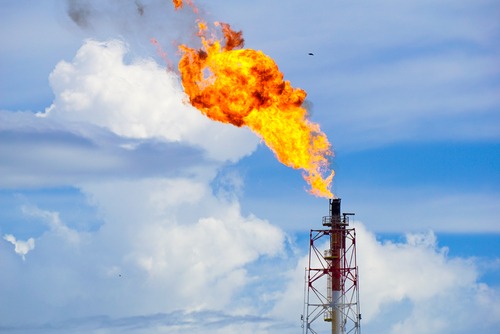EPA proposes new rule to reduce methane emissions from oil, gas sector

The U.S. Environmental Protection Agency (EPA) has proposed rule that seeks to reduce methane emissions from the oil and gas sector.
The proposal calls for assessing a charge on certain large emitters of waste methane from the oil and gas sector that exceed emissions levels set by Congress. The proposed rule also encourages the deployment of technologies and best practices to reduce methane emissions and other air pollutants before the new standards take effect.
“Under President Biden’s leadership, EPA is delivering on a comprehensive strategy to reduce wasteful methane emissions that endanger communities and fuel the climate crisis,” EPA Administrator Michael Regan said. “Today’s proposal, when finalized, will support a complementary set of technology standards and historic resources from the Inflation Reduction Act, to incentivize industry innovation and prompt action. We are laser-focused on working collectively with companies, states, and communities to ensure that America leads in deploying technologies and innovations that aid in the development of a clean energy economy.”
Methane is considered a “super pollutant” that is more potent than carbon dioxide and responsible for approximately one third of the warming from greenhouse gases. The oil and natural gas sector is the largest industrial source of methane emissions in the United States, so a reduction of methane emissions is critical to slow the rate of rising global temperatures.
“We know methane is over 80 times more potent than carbon dioxide at trapping heat in our atmosphere in the short term. Thankfully, the Methane Emissions Reduction Program – which Congress adopted as part of the Inflation Reduction Act – will incentivize producers to cut wasteful and excessive methane emissions during oil and gas production,” Sen. Tom Carper (D-DE), chair of the Senate Environment and Public Works Committee, said.
The Inflation Reduction Act established a Waste Emissions Charge for methane from certain oil and gas facilities that report emissions of more than 25,000 metric tons of carbon dioxide equivalent per year to the Greenhouse Gas Reporting Program. As directed by Congress, the Waste Emissions Charge starts at $900 per metric ton of wasteful emissions in 2024, increasing to $1,200 for 2025, and $1,500 for 2026 and beyond, and only applies to emissions that exceed the statutorily specified levels.
The EPA’s proposed rule details rhow the charge will be implemented, including the calculation of the charge and how exemptions from the charge will be applied. Facilities in compliance with the recently finalized Clean Air Act standards for oil and gas operations would be exempt from the charge after certain criteria set by Congress are met. The EPA expects that over time, fewer facilities will face the charge as they reduce their emissions and become eligible for this regulatory compliance exemption.
Oil and natural gas operations with methane emissions in excess of the emissions intensity levels can reduce or eliminate any charge by deploying readily available technologies to reduce harmful and wasteful emissions. The program should help level the playing field for industry leaders already employing best practices.
